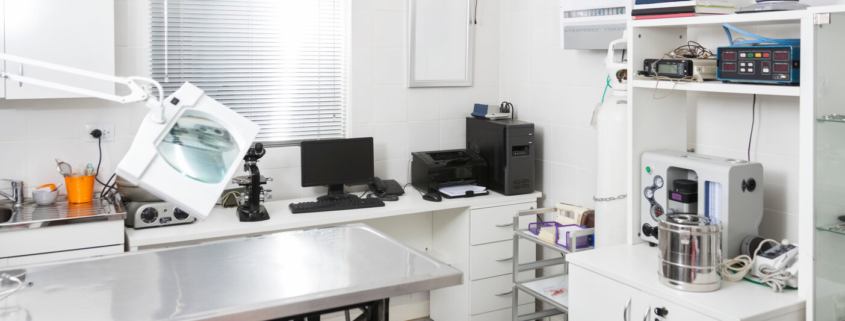How Your Veterinary Practice Can Alleviate Fears for Inventory Budgets
If the words “inventory” and “budget” make you smile, you’re probably in the vast minority. For most industries, these words can spark significant anxiety—and the same goes for the veterinary industry. But setting your inventory budget is a crucial step in the planning process. It will set the foundation for many more important decisions down the road.
Keep reading for some tips on taking the stress out of setting the inventory budget for your veterinary practice.
Inventory Budget 101
We’ll break this sometimes scary process down into four main parts: counting your inventory, purging your inventory, reordering points, and monitoring your revenue.
#1: Counting Your Inventory
The first step is a simple (if not tedious) one—physically taking stock of what your veterinary practice already has. This is a great place to start, but ideally you should be counting your inventory regularly. This is one of the easiest ways to make sure everything’s as it should be, as well as to keep track of what kinds of products you’re using more than others.
Try to get into the habit of doing this quarterly! If that’s not feasible for your practice right now, try to count inventory at least twice a year.
#2: Purging Your Inventory
After you’ve taken thorough stock of all the products you have, it’s time to dive a little deeper. Now you’ll want to take a look at each product’s turnover rate—i.e., how many times it’s being sold within the year. If a product is turning at least 12 times a year, it’s in a good spot.
Paying close attention to product turnover rates will ensure that you’re spending your money wisely. If a product is turning 30 times a year, you’ll know to start ordering more of that product. If there’s a product that’s significantly underperforming, you’ll now have the opportunity to find out why. Don’t simply discontinue the item—try to get to the root! Maybe the doctors within your veterinary practice forgot about the product, or maybe you carry another similar product that they prefer.
#3: Reordering Points
Now it’s time to reevaluate how often you order more products. This will vary for every veterinary practice, so be sure you’re making the right decision for your practice’s unique needs. Your options will typically include ordering for the month, the week, or bi-weekly.
Each option has its perks. For example, ordering for the month can sometimes come with bulk discounts on popular products. But the longer a product sits in your inventory, the more money your practice will have tied up in goods. For this reason, maybe ordering for the week or bi-weekly is best.
#4: Monitoring Your Revenue
This one will sound like a no-brainer, but it’s a crucial piece of the veterinary practice puzzle that’s often overlooked! Make sure you’re bringing in enough money to cover your product costs. If you’re a newer veterinary practice, it’s best to start small! Start with one of each necessary product, and add more options as you grow.
A good rule of thumb? Try not to have any more than $15,000 worth of inventory per full-time doctor.
Interested in Growing Your Veterinary Practice?
Vetrix has been providing high-quality, effective veterinary products to veterinarians around the world for years. Our technology is always cutting edge, and you know you’ll receive great customer service. Get in touch with us today to chat, or visit our website to learn more about our products.



